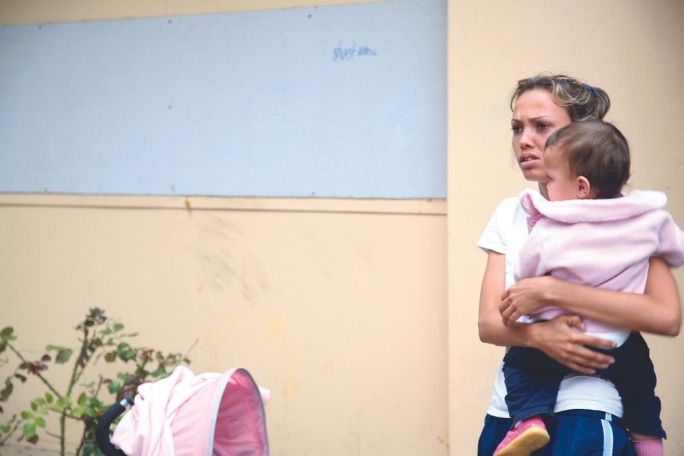Lesson summary
Students explore the different types of homelessness in a word match game, then explore some of the ways news media portray youth homelessness by looking at and comparing a range of media articles covering the issue of homelessness. A Media Watch episode is used to guide students’ exploration of editorial positions adopted in media content and the effect that they can have on the public’s view of an issue. Students are asked to consider how the media uses existing stereotypes to reinforce their editorial stance, and the effect that these articles have on the public’s view of the issue of homelessness.
Key ideas to explore:
- Different individuals, groups and organisations in society respond to and portray youth homelessness differently.
- Stereotypes play a role in the creation of particular cultural perspectives.
- Whether students are empathetic in their own responses to stories of youth homelessness.
Lesson guides and printables
Lesson details
Curriculum mapping
Australian Curriculum content descriptions:
Year 9 English:
- Interpret, analyse and evaluate how different perspectives of issue, event, situation, individuals or groups are constructed to serve specific purposes in texts (ACELY1742)
- Use comprehension strategies to interpret and analyse texts, comparing and evaluating representations of an event, issue, situation or character in different texts (ACELY1744)
- Explore and explain the combinations of language and visual choices that authors make to present information, opinions and perspectives in different texts (ACELY1745)
Year 10 English:
- Identify and analyse implicit or explicit values, beliefs and assumptions in texts and how these are influenced by purposes and likely audiences (ACELY1752)
- Use comprehension strategies to compare and contrast information within and between texts, identifying and analysing embedded perspectives, and evaluating supporting evidence (ACELY1754)
Year 11 English:
- analysing how language choices are made for different purposes and in different contexts using appropriate metalanguage; for example, personification, voice-over, flashback, salience (ACEEN002)
- evaluating the impact of description and imagery, including figurative language, and still and moving images in digital and multimodal texts (ACEEN007)
- purpose, taking into account that a text’s purpose is often open to debate (ACEEN008)
- personal, social and cultural context (ACEEN009)
- using evidence-based argument (ACEEN014)
- investigating the impact and uses of imaginative, interpretive and persuasive texts (ACEEN020)
- analysing the style and structure of texts including digital texts (ACEEN022)
- analysing the ways language features, text structures and stylistic choices shape points of view and influence audiences (ACEEN024)
- evaluating the effects of rhetorical devices, for example, emphasis, emotive language and imagery in the construction of argument (ACEEN025)
- the ways ideas, attitudes and voices are represented, for example, how events are reported differently in the media (ACEEN029)
- using imaginative, interpretive and persuasive elements for different purposes, contexts and audiences (ACEEN032)
- selecting and applying appropriate textual evidence to support arguments (ACEEN035)
Year 12 English:
- analysing and evaluating how similar themes, ideas or concepts are treated in different texts (ACEEN043)
- analysing the techniques and conventions used in different genres, mediums and modes (ACEEN044)
- the ways language patterns can create shades of meaning (ACEEN047)
- making innovative and imaginative use of language features (ACEEN051)
- comparing the contexts in which texts are created and received (ACEEN062)
- analysing content, purpose and choice of language (ACEEN063)
- analysing the use of voice and point of view such as in feature articles, reporting of current events or narration (ACEEN064)
- exploring other interpretations and aspects of context to develop a considered response (ACEEN065)
- using appropriate language and stylistic features to sustain a personal voice and point of view (ACEEN069)
Syllabus Outcomes: EN5-1A, EN5-2A, EN5-8D.
General capabilities: Critical and Creative Thinking, Ethical Understanding, Literacy.
Unit of work: THE OASIS – English
Time required: 120 minutes (or 2x 60 minutes)
Level of teacher scaffolding: Medium – facilitate discussion.
Resources required
- Student Worksheet – one copy per student OR computers/tablets to access the online worksheet
- Device capable of presenting a website to the class and access to THE OASIS documentary on Vimeo
- Different types of homelessness – matching game, Different types of homelessness factsheet
- Sticky-notes, A5 paper and Blu-Tack
Additional info
This resource has been adapted from ‘Teaching Social Issues Through English’ developed with the English Teachers Association NSW and the ‘Youth Homelessness Matters Resource’ developed by Janice Atkin. You can find these resources here.


Welcome back!
Don't have an account yet?
Log in with:
By signing up to Cool.org you consent and agree to Cool's privacy policy to
store, manage and process your personal information. To read more, please see
our privacy policy here(Opens in new tab).
Create your free Cool.org account.
Many of our resources are free, with an option to upgrade to Cool+ for premium content.
Already have an account?
Sign up with:
By signing up to Cool.org you consent and agree to Cool's privacy policy to
store, manage and process your personal information. To read more, please see
our privacy policy here(Opens in new tab).